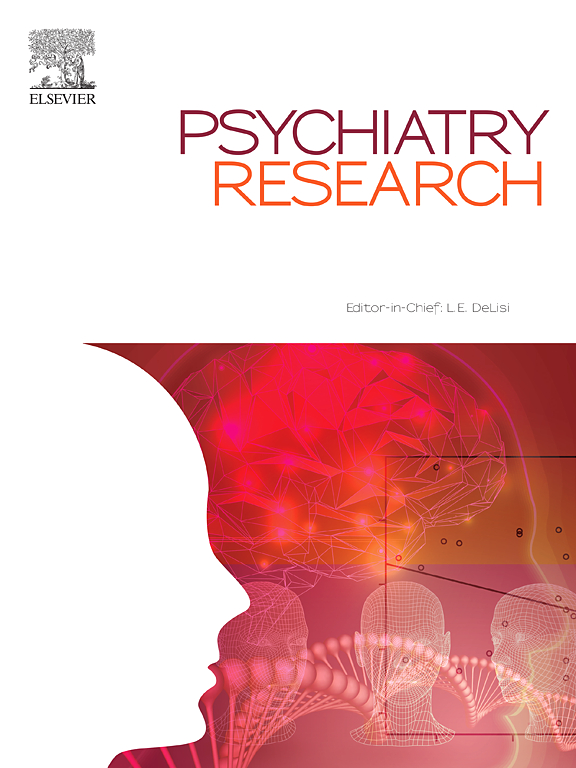Elevated levels of peripheral and central nervous system immune markers reflect innate immune dysregulation in autism spectrum disorder
IF 4.2
2区 医学
Q1 PSYCHIATRY
引用次数: 0
Abstract
Background
Evidence suggests dysregulated immune functions in the pathophysiology of Autism spectrum disorder (ASD), although specific immune mechanisms are yet to be identified.
Methods
We assessed circulating levels of 25 immune/neuroinflammatory markers in a large ASD sample (n = 151) and matched controls (n = 72) using linear models. In addition, we performed global brain transcriptomics analyses of relevant immune-related genes. We also assessed the expression and function of factors and pathway elements of the inflammasome system in peripheral blood mononuclear cells (PBMC) isolated from ASD and controls using in vitro methods.
Results
We found higher circulating levels of IL-18 and adhesion factors (ICAM-1, MADCAM1) in individuals with ASD relative to controls. Consistent with this, brain levels of ICAM1 mRNA were also higher in ASD compared to controls. Furthermore, we found higher expression/activity of Caspase-1 and the inflammasome sensor NLRP3 in PBMCs in ASD, both at baseline and following inflammatory challenge. This corresponded with higher levels of secreted IL-18, IL-1β, and IL-8, as well as increased expression of adhesion factors following inflammasome activation in ASD PBMC cultures. Inhibition of the NLRP3-inflammasome rescued the observed immune phenotype in ASD in vitro.
Conclusion
Our results suggest a role for inflammasome dysregulation in ASD pathophysiology.
外周和中枢神经系统免疫标记物水平升高反映了自闭症谱系障碍的先天免疫失调
背景有证据表明,自闭症谱系障碍(ASD)的病理生理学中存在免疫功能失调,但具体的免疫机制尚未确定。方法我们使用线性模型评估了大量 ASD 样本(n = 151)和匹配对照(n = 72)中 25 种免疫/神经炎症标记物的循环水平。此外,我们还对相关免疫相关基因进行了全脑转录组学分析。我们还使用体外方法评估了从 ASD 和对照组分离的外周血单核细胞(PBMC)中炎性体系统因子和通路元件的表达和功能。与此相一致的是,与对照组相比,ASD 患者大脑中 ICAM1 mRNA 的水平也更高。此外,我们还发现在 ASD 患者的 PBMCs 中,Caspase-1 和炎性体传感器 NLRP3 在基线和炎症挑战后的表达/活性都更高。这与 ASD PBMC 培养物中分泌的 IL-18、IL-1β 和 IL-8 水平较高以及炎症小体激活后粘附因子表达增加相对应。抑制 NLRP3-炎症小体可以挽救体外观察到的 ASD 免疫表型。
本文章由计算机程序翻译,如有差异,请以英文原文为准。
求助全文
约1分钟内获得全文
求助全文
来源期刊

Psychiatry Research
医学-精神病学
CiteScore
17.40
自引率
1.80%
发文量
527
审稿时长
57 days
期刊介绍:
Psychiatry Research offers swift publication of comprehensive research reports and reviews within the field of psychiatry.
The scope of the journal encompasses:
Biochemical, physiological, neuroanatomic, genetic, neurocognitive, and psychosocial determinants of psychiatric disorders.
Diagnostic assessments of psychiatric disorders.
Evaluations that pursue hypotheses about the cause or causes of psychiatric diseases.
Evaluations of pharmacologic and non-pharmacologic psychiatric treatments.
Basic neuroscience studies related to animal or neurochemical models for psychiatric disorders.
Methodological advances, such as instrumentation, clinical scales, and assays directly applicable to psychiatric research.
 求助内容:
求助内容: 应助结果提醒方式:
应助结果提醒方式:


